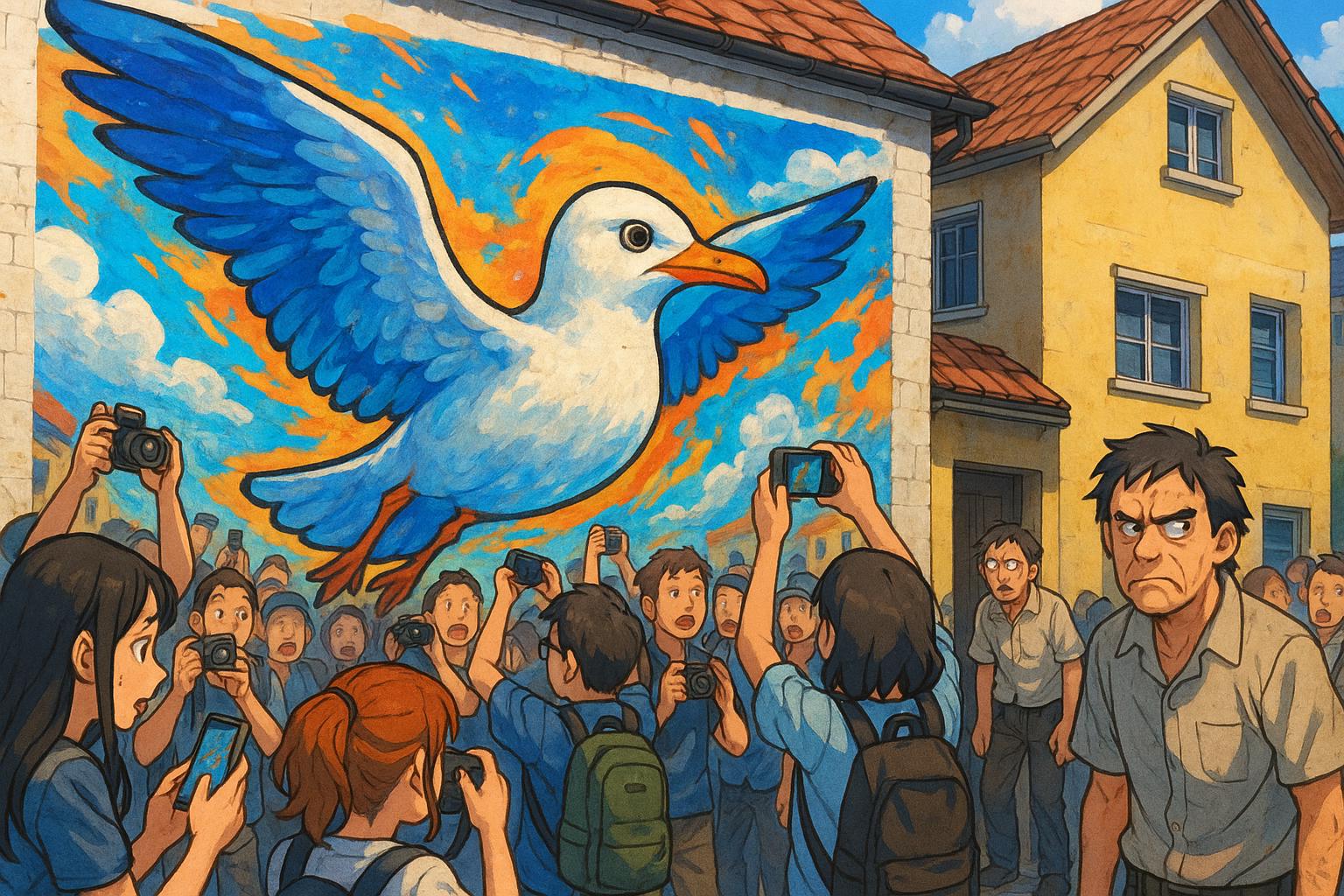The unforeseen consequences of street artist Banksy’s work have left some homeowners in Lowestoft grappling with significant financial and emotional burdens. Gert and Gerry Coutts, who own a property adorned with a striking mural depicting a seagull feasting on a refuse skip, claim that the unexpected fame brought by Banksy has cost them around £400,000. Initially thrilled by the attention, the couple’s excitement has soured, transforming what they perceived as a potential financial windfall into a protracted nightmare.
The vibrant artwork, created in August 2021 as part of Banksy's "Great British Spraycation" series, unexpectedly turned their rented property into a tourist hotspot. Shortly after tenants alerted them to the sudden appearance of scaffolding, the couple discovered that it had been replaced with a colossal 14-foot mural. The installation attracted hundreds of visitors daily, generating a frenzy that was both exhilarating and distressing. As Mr Coutts succinctly expressed, they have felt “the p**s taken out of us” by Banksy’s actions.
Despite initial estimates placing the mural's value between £1 million and £3 million, the couple faced immediate challenges. Increased foot traffic led to queues forming around their house, drawing unwanted attention and even prompting attempts of theft. This was epitomised when a man tried to sell a piece of their property’s scaffolding for £1,600 on social media. As the situation escalated, the allure of the artwork quickly turned into a source of frustration. The couple resorted to hiring a night watchman to deter vandalism, ensuring that their investment remained intact amid growing local resentment.
In February 2023, the owners were informed by the local council that a preservation order could be placed on the artwork, potentially obligating them to maintain it for an annual fee of £40,000. This news ignited further distress, as they grappled not just with the financial implications but also with the public perception of their circumstances. Many in the community voiced their discontent, accusing the Coutts of “stealing” the artwork from public view when they decided to remove it entirely in May 2023. The final section of the mural was taken down under the cover of night, a move that prompted backlash among residents who had come to cherish the piece as a local landmark.
Art dealer John Brandler remarked on the irony of the situation, highlighting that while the artwork's value was significant, its removal stripped away the cultural contribution it had made to the community. He had earlier stated that the piece could be worth between £250,000 and £2 million, a figure underscoring the complexities of ownership versus public appreciation in the realm of street art.
Ultimately, the Coutts’s story reflects a broader tension between artistic expression and property rights. As Ms Coutts poignantly asked, “Does Banksy realise what the consequences are of his artwork—or does he care?” Their journey through this unexpected fame serves as a cautionary tale for others, revealing how the allure of art can sometimes exact a heavy toll on those it touches.
The mural may have originally been a symbol of creativity and urban expression, but for the Coutts family, it stands as a reminder of the unpredictable ramifications of modern art. Their experience raises vital questions about the responsibilities of artists and the often fraught intersection of creativity, ownership, and community sentiment.
Reference Map
- Paragraph 1: 1, 5
- Paragraph 2: 1, 2
- Paragraph 3: 1, 5, 4
- Paragraph 4: 1, 6
- Paragraph 5: 2, 3, 4
- Paragraph 6: 2, 4
- Paragraph 7: 1, 2, 3, 6
Source: Noah Wire Services
